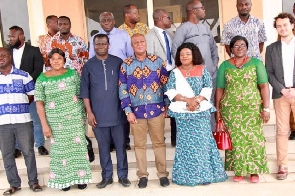The two key facilitators for reducing breast and cervical cancer death tolls in Ghana are health education and regular screening programs, Dr Mrs Beatrice Wiafe Addai has noted.
She said these are aimed at reducing the late-stage presentation and are primarily geared at reversing cancer-related mortality statistics countrywide.
Dr Mrs Beatrice Wiafe Addai, the President of Breast Care International (BCI), said these two indices have been on the front burner of Breast Care International’s campaign.
She said this in her welcome address at the launch of the Kumasi Breast Cancer and Cervical Cancer Management Guidelines in Kumasi on Friday, December 9, 2022.
Kumasi was selected to host the City Cancer Project, dubbed C/CAN 2025 Project in 2018.
The C/CAN 2025 Project is undertaken by the Union for International Cancer Control, UICC to reduce cancer mortality by 25 percent by 2025.
Kumasi is the first city in Africa and the fourth in the world to host the C/CAN 2025 Project.
It was through initiative efforts by Hon. Kwaku Agyeman Manu, Hon Simon Osei Mensah, Hon Osei Asibey Antwi, Dr. Beatrice Wiafe Addai and Dr. Baffour Awuah.
“The launch of the breast and cervical cancer management guidelines lifts the campaign some notches up, for us to re-think breast and cervical cancer preventive measures,” she stated.
“Socializing the guidelines imposes a responsibility on us all to integrate our various cultural values into our mass market public education programs, if the targeted publics, are to internalize and benefit from them,” she added.
Dr Wiafe Addai, who is the CEO of Peace and Love Hospitals also said “the guidelines should not be detached from our cultural setting, which detachment, could potentially alienate those intended to benefit from our primary health care modules, designed to achieve the objects of the guidelines”.
She also called for the need to qualitatively discuss breast and cervical cancers, the two most debilitating cancers among women which should encompass prevention, diagnosis, chemotherapy, surgery, palliative care and the various targeted therapies applicable in the treatment cycle of both conditions.
“We should navigate the various treatment cycles with care and promptness, but at the heart of the cycle is early detection, awareness creation and mass market public education,” she concluded.
Health News of Monday, 12 December 2022
Source: otecfmghana.com

















